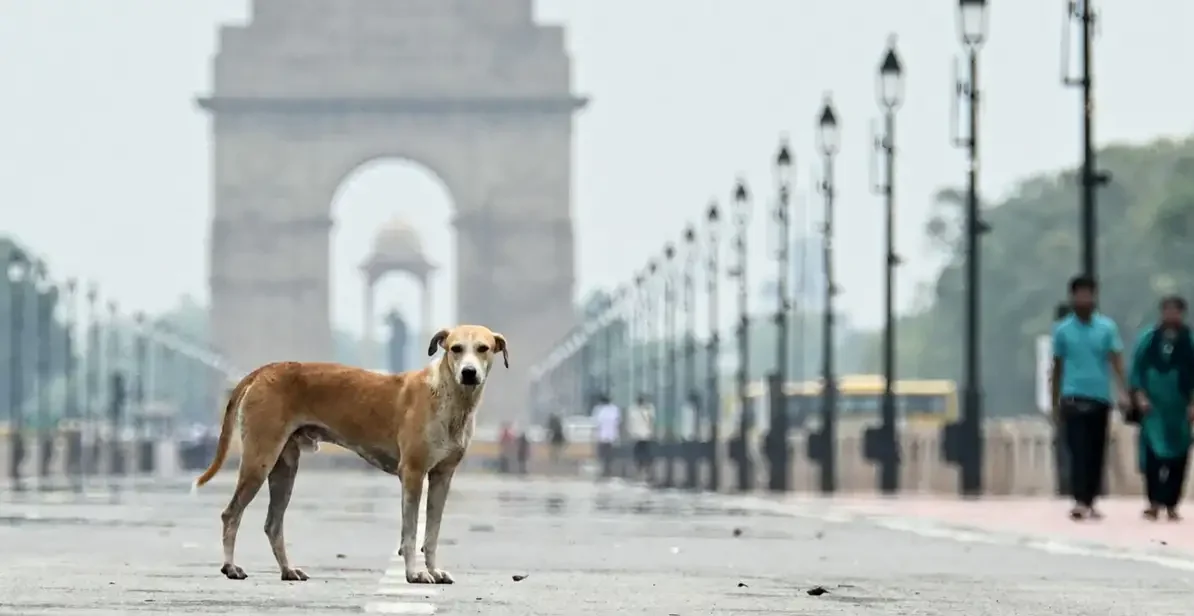For decades, stray dogs have been an inseparable part of India’s urban landscape, especially in a city as diverse and vibrant as Delhi. The capital’s streets are alive not only with the daily hustle of people but also with countless dogs who have made alleys, markets, and neighborhoods their home. Recently, the Indian government announced that it would scale back its earlier plans to remove stray dogs from Delhi’s streets. This decision has sparked debate, relief, and a deeper reflection on the country’s evolving relationship with animals.
The Plan That Sparked Outrage
Initially, there were discussions about large-scale removal of stray dogs from Delhi. The idea was to control their population and address rising concerns over dog bites, sanitation, and public safety. For many residents, particularly parents of young children and the elderly, the presence of aggressive or hungry strays had become a real worry. Reports of attacks added to the pressure on civic authorities to take decisive action.
Yet, the proposed plan triggered an immediate backlash. Animal lovers, activists, and citizens from across the city raised concerns about the inhumanity of such a move. For them, the solution was not elimination or removal but compassion, sterilization, and better management.
Why the U-Turn Happened
The decision to scale back the plan came after weeks of public debate. At the heart of it was the realization that Delhi’s stray dog problem could not be solved by simply sweeping the streets of its canine residents.
Experts pointed out that India’s animal birth control program had been yielding results in some regions. Vaccination drives and sterilization campaigns showed that humane methods could gradually control the population. Removing dogs from their natural territories would only create a vacuum that other strays would soon fill. It became clear that relocation was neither sustainable nor kind.
Additionally, Delhi’s citizens shared stories of how street dogs offered companionship and even protection. Many neighborhoods treat their local dogs as unofficial guardians, feeding them and caring for them. Erasing them from the streets would also erase a part of the city’s unique character.
The Emotional Bond Between Delhiites and Stray Dogs
In every colony of Delhi, it is common to find a group of dogs sleeping peacefully near tea stalls, apartment gates, or street corners. They know the vendors, recognize the children, and often form bonds with families who provide them food and water. For many residents, these dogs are not “strays” but part of their extended community.
This bond runs deeper than most people realize. For elderly citizens living alone, feeding street dogs is often their way of staying connected to life and love. For children, these dogs become their first introduction to empathy. For shopkeepers and night workers, dogs act as watchful companions, barking at strangers and offering a sense of safety.

By scaling back the plan, the government acknowledged this human-animal connection. It was a recognition that stray dogs are not just a “problem” but living beings intertwined with the city’s daily rhythm.
Challenges That Remain
While the decision has been welcomed by many, challenges still loom large. Delhi struggles with thousands of stray dogs, and not all of them are healthy or friendly. Dog bite cases, though not as common as feared, do occur and need serious attention. Rabies, though preventable, is still a deadly disease that claims lives each year in India.
The way forward requires a balance—protecting public safety while ensuring that animals are treated with dignity. Stray dogs cannot simply be left to fend for themselves, nor can citizens be left vulnerable to potential attacks. The middle path lies in strengthening sterilization programs, widespread vaccination, and creating awareness among citizens on how to interact with street dogs safely.
The Role of Communities
One of the most heartening outcomes of this debate has been the realization that solutions must come from within communities. Civic authorities cannot do it alone. Resident Welfare Associations (RWAs), schools, and local volunteers can play a vital role in managing street dogs responsibly.
Neighborhoods that have worked with NGOs and vets to sterilize and vaccinate their local dogs often report fewer conflicts. Dogs that are well-fed and cared for rarely become aggressive. Education programs in schools can also teach children to approach street dogs with respect, reducing fear and hostility on both sides.
Animal Welfare as a Reflection of Society
The stray dog issue is more than just a civic challenge—it reflects the values of society. How a city treats its most vulnerable beings, whether human or animal, speaks volumes about its humanity. By choosing compassion over cruelty, Delhi has taken a small but significant step toward building a kinder future.
India has always had a spiritual and cultural connection with animals. From temples that honor them to festivals that celebrate their presence, animals hold a sacred place in the country’s ethos. The decision to not uproot stray dogs resonates with this heritage, reminding people that kindness is never wasted.
Looking at Global Examples
Other countries too have faced similar challenges with stray animals. Cities in Latin America, Southeast Asia, and Eastern Europe have dealt with large stray dog populations. Many of them eventually shifted from harsh culling practices to humane management. Over time, vaccination and sterilization programs proved more effective, safer, and more ethical.
Delhi’s revised approach shows it is learning from these experiences. By scaling back the removal plan, the city is aligning itself with global practices that put compassion at the center of urban animal management.
A Way Forward
For the decision to truly work, authorities must now act with consistency. Half-hearted sterilization drives or sporadic vaccination camps will not be enough. The problem requires long-term vision, steady funding, and strong collaboration between government agencies, NGOs, and citizens.
It also requires a shift in mindset. Instead of seeing stray dogs as a nuisance, people can see them as fellow inhabitants of the city. With a little effort, care, and responsibility, coexistence is not just possible—it can be beautiful.
Conclusion: A City of Coexistence
Delhi has always been a city of contrasts—modern yet traditional, chaotic yet harmonious, harsh yet kind. Its streets are a microcosm of India’s soul. Stray dogs are part of this picture, a living reminder of resilience, survival, and the power of small kindnesses.
By scaling back its plan to remove them, India has chosen compassion over convenience, coexistence over control. The decision does not mean the challenges are over, but it opens the door for humane solutions. It is a chance for Delhi to lead by example, showing the world that a great city does not have to turn its back on its most vulnerable beings.
In the end, it is not just about the dogs. It is about the kind of society Delhi, and India, want to be—one where humanity shines not in how it treats its powerful, but in how it treats those with no voice but a wagging tail.
Read More – Prithvi Shaw’s Mixed Run For Maharashtra Continues









Leave a comment